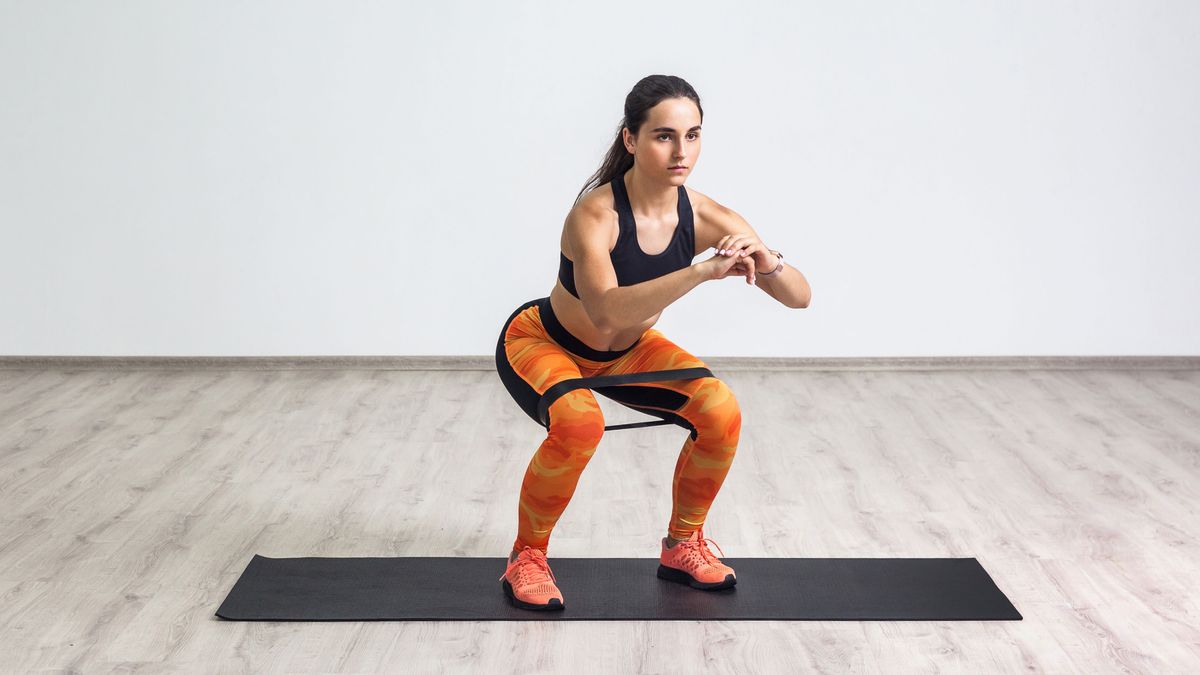If you want to improve your glute and quad muscles, you may be wondering how to squat with resistance bands. This compound movement is one of the simplest and most effective exercises for the legs. Adding a resistance band to your squats will increase the intensity of the exercise and could also help improve your form.
To do the exercise, you simply need to wrap the band around your legs, just above the knees, before squatting down. Sounds simple, right? But it’s easy to make mistakes when you squat, so we asked the experts how to do it right.
As a quick side note, the best resistance band for squats they are the ones with a shorter loop, which sit comfortably around both legs. Make sure you have one on hand before you begin. And if you’re looking for more ways to wear your band, check out our article on ideas for leg exercises with resistance bands
Tips and guidance
Squatting with a resistance band is sometimes called a “band squat.” It’s similar to a regular squat, but you’ll feel a little more resistance when you do it. Mike Tanner, personal trainer and director of education and learning at bodyismrecommend following these steps:
1. First, position the resistance band just above the tops of your knees.
2. Next, make sure your feet are slightly wider than hip-width apart and your feet are turned 5-10 degrees.
3. Squat down and push your hips back. Keep your knees pushing out to the sides of the band as you squat, but make sure they stay in line with your toes. This activates the muscles that align your knees as you squat to improve your squatting movement pattern.
4. Stand up and release the band slightly as you do so, then repeat for nine more reps.
How to make your band squats harder
The easiest way to make your band squat harder is to use a resistance band with a higher resistance level. But there are other ways to increase the intensity.
Constantinos Yiallouros, of Anytime Fitness UK, recommends pausing for about three seconds at the bottom of the movement, before slowly working your way back up. “The extra pause and slow ascent will increase your time under tension even more and give you many more benefits than going up fast. For extra benefit at the top of the movement, squeeze your glutes before doing your next rep,” he said.
Once you can comfortably do this, you can lengthen the pause at the bottom of the squat to make it more difficult.
Common Squat Mistakes to Avoid
There are some common mistakes made when squatting, both when using resistance bands and when using free weights. This is what you need to keep in mind.
Knees turned in: This is often caused by a weakness in the buttocks. Band squats will be particularly effective at correcting this problem, says Yiallouros, because the constant tension involved means you have to focus on your form, but also because band squats increase the strength of your glutes.
Half reps: For best results, you should complete a full range of motion, which means placing your thighs parallel to the ground before you begin to stand up. This will mean that you will get the maximum benefit from the squat. Some people help themselves do this by placing an exercise bench or low chair behind them when they squat. When their rear end hits the bench, they know they’ve completed the full range of motion.
Heels off the ground: Your feet should remain flat on the ground throughout the entire squat movement, Yiallouros says. When squatting, you should push through your heels rather than your balls or toes; this will give you the maximum benefit from the exercise.
What are the benefits of doing squats?

Squats are a compound movement and use many different muscles, but they primarily focus on the legs. Richard Blagrove, professor of physiology at the loughborough university, explained that the movement primarily targets the glutes and quads. But a well-executed squat can also recruit other muscles: “If the squat is performed with a load and good form, the stabilizing and stationary muscles around the trunk and upper body also receive a strong stimulus,” Blagrove said.
Strengthening your lower extremities can make everyday tasks, like climbing stairs, feel easier. And building leg muscles is also great for sports performance, according to Blagrove: “In sports, the strength needed to perform explosive movement patterns, such as running, changing directions, and jumping, comes from the muscles of the lower extremities.” “.
Adding a resistance band to your squat will increase the intensity of your exercise and may have other benefits as well. “When you compare band squats to free weight squats, the main benefit is the focus on proper form,” Anytime Fitness’ Yiallouros said. “The tightness of the band means you focus more on the movement and are less likely to compromise your form and potentially cause injury.”
